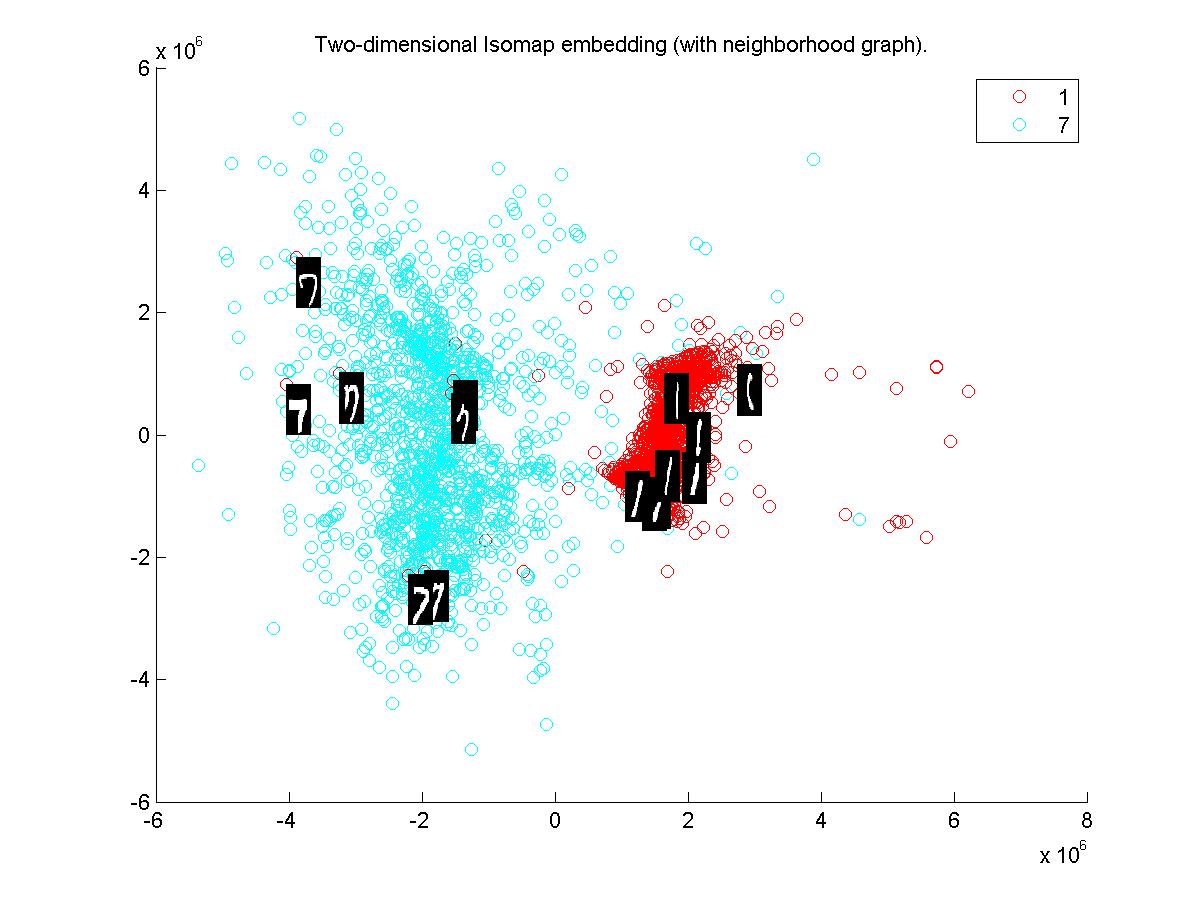Assignment 1
This algorithm classifies objects based on their nearest neighbours. In the nearmost k neighbours, the most common class is calculated and then assigned to the object. This scheme has a very general thought foundation ie. it's algorithm appears obvious to the common man.

Observations
As the value of k increases, the error in classification initially decreases then increases generally apart from a few exceptions.
The best value of k , when done for k varying from 1 to 50 on a dataset of 60000 MNIST images, is observed to be 3.
The error percentage at k=3 is observed to be 2.83.
Brief
Isomap firstly finds the distance along a curve or manifold, i.e. the geodesic distance, between points given in the input. This is done using the shortest path distances on the k-nearest neighbour graph of the data.
Then MDS is used to find points in Euclidean Space which is of lower dimensions, whose distance matches the geodesic distances found earlier.
Euclidean Distance 1 and 7






Key Observation from Isomap
Tangent Distance is a better distance metric than the Euclidean distance metric. The clusters are denser in the tangent distance metric case as evident from the above figures.
Observation